Artists' Writing
Artists' Writing
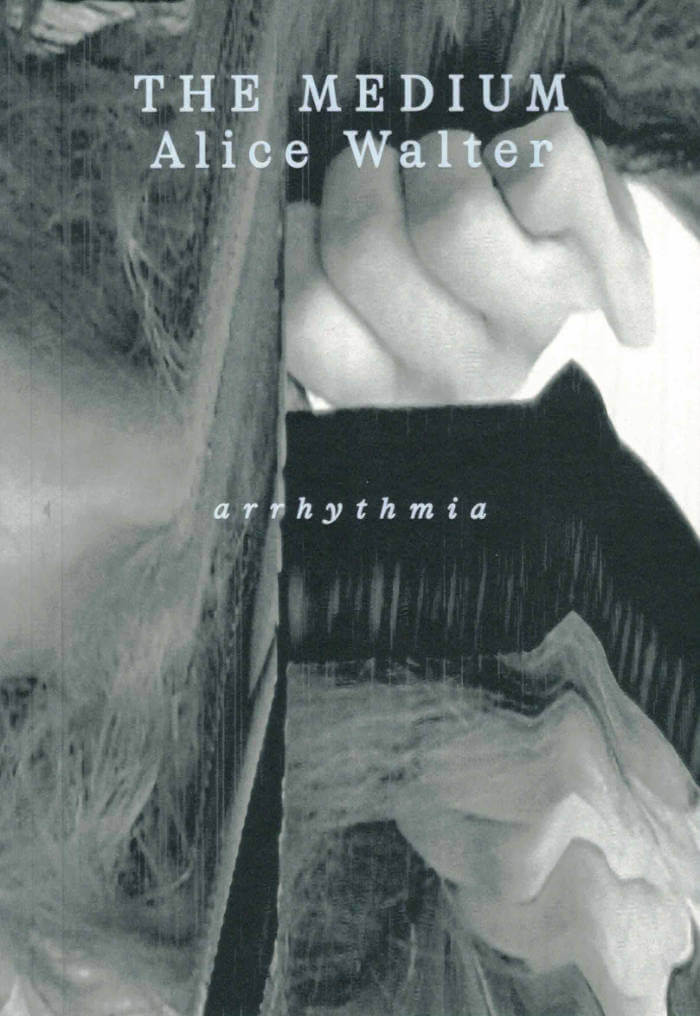
The Medium
To read The Medium is to be submerged in a stream of consciousness populated by uninvited voices from the underworld. Animated, urgent, and brutally propulsive, this cacophony of competing narratives begins to upset the boundary between the living and the dead. The Medium is an alchemical novel, shimmering with insight from the depths of a black lake.
The Medium is published as part of Arrhythmia, a series curated for Book Works by Katrina Palmer.
Alice Walter is an artist, writer and medium – living and working in the UK. She has a BA in Fine Art, Film and Video from Central Saint Martins, UAL and a MFA from The Ruskin School of Art, Oxford University. Her practice combines collage, psychosexual sculpture, VHS and shamanism. Through these disciplines, Alice creates surreal and sensory spaces that open channels for the unseen.
Katrina Palmer is an artist and writer, living in London. She is the author of The Dark Object (2010), The Fabricators Tale (2014), End Matter (2015) and Black Slit (2023), all published by Book Works. She has exhibited extensively, including with an Artangel Open commission (2015), at Henry Moore Institute (2015-16), Yorkshire Sculpture Park (2018), and with Estuary and Waterfronts (2021). She received the Paul Hamlyn Foundation Award for Artists (2014).

Confidences / Oracle
Oracles don’t require belief—they now theatrically suspend disbelief. No longer advisors of world policy, they run Locus Solus, a town that has come to ramble around an eponymous theatre and chocolate factories. Theo, a centuries-old vampire intent on remaining contemporary through performance, visits Locus Solus, which is hosting Praise Estate, an international theatre festival. He uses the festival as an opportunity to stay with Gean, his oracle boyfriend, who is there visiting family. Theo has a fetish for the future, fixated on the one thing he is in no shortage of.
Confidences / Oracle is a lover’s trip to a weeklong theatre festival. A vehicle for recontextualising recent performance scripts and texts, Oracle is the third instalment in Ivan Cheng’s Confidences series, which intertwines vampires and performance as sites for circulation and recognition.
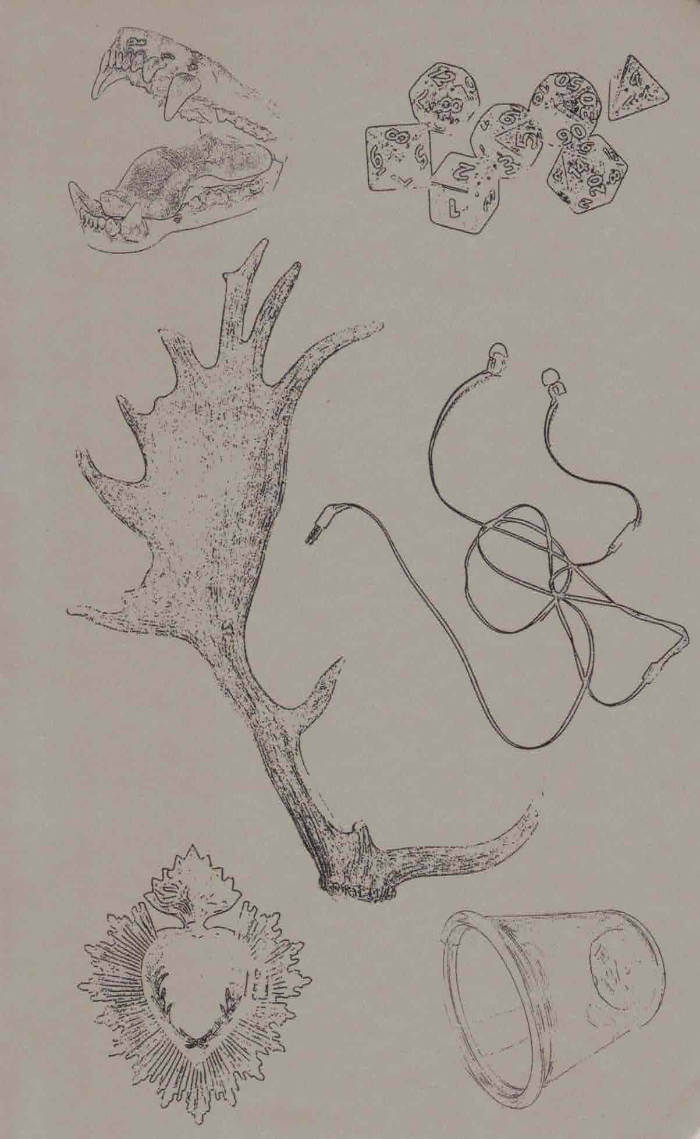
to enter the forest
to enter the forest is an invitation to suspend the acquired systems of knowledge, to look for other ways of “world making.” The book includes a revised and extended version of to err together with the unpublished correspondances.
to err gathers walking exercises and notes, created as instruments for choreographic composition, but practicable by anyone, to put one’s perspective about self and what is other to self, as well as the relations between things, even beyond the human, into question.
correspondances is an ensemble of writing exercises through which to investigate the system of consciousness around verbal language, asking ourselves what words mean from a slightly shifted perspective.
The publication is coproduced by a.pass, nadine, Buda Art Centre, Indisciplinarte, Flanders State of the Art.
lucia palladino is a transdisciplinary artist and researcher in the fields of performance, choreography, and dance. Her practices consist in the elaboration of forms of resistance to notions of identity and ownership naturalized by history and by culture, that define our knowledge and expectations and that need to be undone in order to make space for meeting.
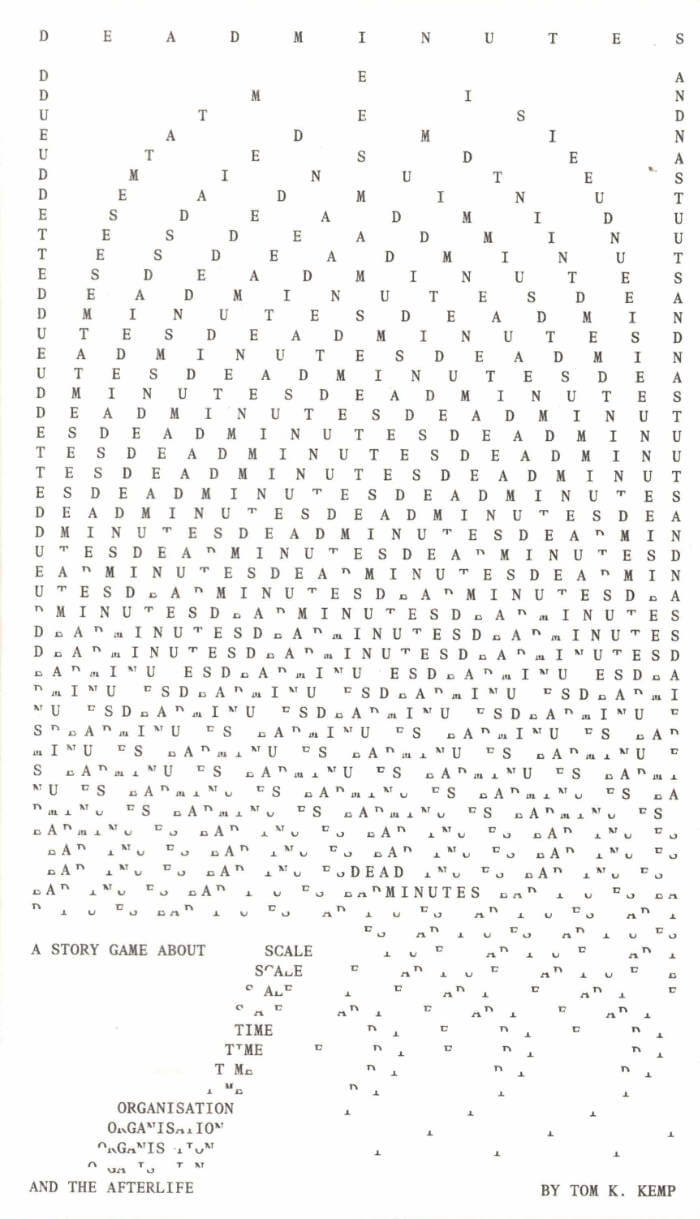
Dead Minutes
Dead Minutes is a storytelling game about systemic change in an undesirable afterlife. You, the players, will decide what this hell, underworld or land of the dead is like, what its problems are, how change happens there, and what the complications might be when altering something so big, involving so many dead people, over so much time. It’s a game about impossible seeming actions at impossible seeming scales, making difficult choices, and dealing with unexpected outcomes.
The first half of this book gives you everything you need to play a session of Dead Minutes, which takes 2-5 hours with 3-6 people.
The second half features an essay by Patricia Reed that expands on the concepts of heuristic fictions and vital zombies in relation to the afterlife, and a series of afterlife generating 'seeds' contributed by different types of writers - a demonic boardroom presentation by writer and art critic Habib William Kherbek, a ritual from horror game designer Samuel Clarice Mui Shen Ern, a premise by Arthur C Clarke award winning author Chris Beckett, and a letter from Selma Selman.

The Clip-On Method
The Clip-On Method is THE book on the work of Cady Noland everybody was waiting for but nobody expected. Two volumes, almost 600 pgs, that gather a minute, specific, documentation of the artist’s works (“often shown within their first installations,” from 1984 onwards) and further unfold the issues and questions that form the core of her practice and structure her engagement in art – without imposing any interpretation, critical perspective, other than the one proposed (suggested) by the artist’s own approach to the book form.
Book 1 gathers documents, essays, sholarly texts and articles regarding capitalism, violence, aircraft industry, racial discrimination in US universities, amongst various issues, interspersed with pictures of the artist’s works.
In Book 2 there are more photographs along with an exciting, impressive collection of writings by Noland (including, of course, “Towards a Metalanguage of Evil”). Most of the texts, and several of the pictures as well, are presented as facsimiles, laying out the work process, and the origins of what forms that sum.
Design by Cady Noland, Will Holder
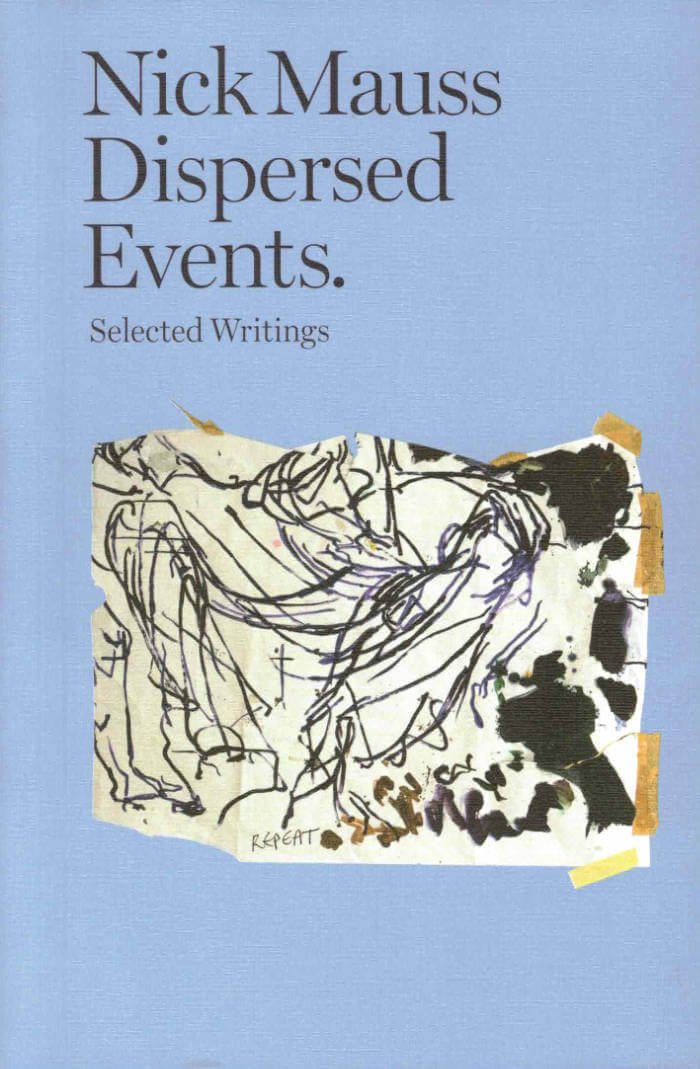
Dispersed Events. Selected Writings
Dispersed Events brings together for the first time Nick Mauss’ essays from the last fifteen years. Shimmering with the urgency of a new generation of queer thinkers, Mauss’ writing refracts contemporary art through histories of decorative art, film, theater, and dance.
An artist renowned for critically and poetically reconfiguring inherited genealogies and hierarchies of visual culture and art history, Mauss engages writing as a space for relentlessly activating counter-histories, repositioning the voice of the artist and the readers along the way. Whether he considers the practice of artist Lorraine O’Grady, the radical fashion of Susan Cianciolo, the anarcho-vaudevillian theater of Reza Abdoh, or the potential for textiles to disclose a different way of thinking, Mauss insists on the intense power of forms and feelings in their actual rather than enforced prehistories. Reevaluating experiments in fashion, dance, and the decorative arts on the same plane as painting, sculpture and cinema, he locates art as taking shape in the middle of conversations—“between art history and any afternoon.”
“Among what might initially appear, following Mauss, ‘a wildly inscrutable web of lineages,’ the reader quickly perceives unexpected, unheralded, conjunctions: affiliations, alignments, and affinities. . . . It generates a conviction that, in the best sense, is partisan. Singular, independent, illuminating.” — from the foreword by Lynne Cooke

Sore
Sore is a publication that brings together seven texts by authors whose writing practice oscillates between the genres of diary and fiction. Observations of every- day life, memories and cultural references intertwine to form an ensemble of texts that highlight the significance of the soreness we carry within us.
With contributions from : Niklas Büscher, Tindra Eliason, Céline Mathieu, Jonathan Lubasch, E. Eriskat, Emma Bombail and Bryony Dawson + an introduction by Mathilde Heuliez.
Graphic design: Lisa Lagova

Ornamenti: An experiment on puppet furniture and beauty props
Featuring "Pebbles, Chrome, Silk, Cedar and Anecdotes", a short story by Lucy McKenzie.
Photographs: Camille Vivier
Publication layout: Alice Zani

Why Do Hoodie Strings Taste So Good?
This text is an attempt to explain the importance of comfort regulation, through sensory stimulation. Whether that be from fidgeting, through masturbation to cuddling and other activities. This thesis is about self-regulation and the objects which visualise that need. From the Freudian psychoanalysis idea of child development through transitional objects introduced by Donald Winnicot to Dakimakura phenomena in otaku culture in a Japanese society that seeks closeness to cute pastelle vibrators which are overflowing the sex toys market. The attempt to answer this question: “Why do hoodie strings taste so good?” seeks to answer the overarching need for constant adjustment to the environment we live in.
I’m intrigued by the need for biting, sucking, and tapping random objects. The fidgeting era is here! We are overwhelmed by all kinds of spinners, popping toys, anti-stress devices, dopamine booster, etc. What is it all about and why have fidget spinners became such a hype in the recent years? Have you ever considered why your hoodie strings taste so good? Have you caught yourself while compulsively sucking them in the metro or at the bus stop? This thesis will endeavour to answer these questions. The answer might be much easier and more pragmatic than we think. In contradiction to my deep analysis in the following sections, one of the reddit users wrote in response to the above question: Why do hoodie strings taste so good?
“Just don’t do it! After sucking them a few times, they become bacteria factories/colonies, so taste (and probably smell) evolves over time. Don’t suck and chew them!! They do, however, work as good, reachable things to practise finger dexterity – to tie knots into and practice rope binding”
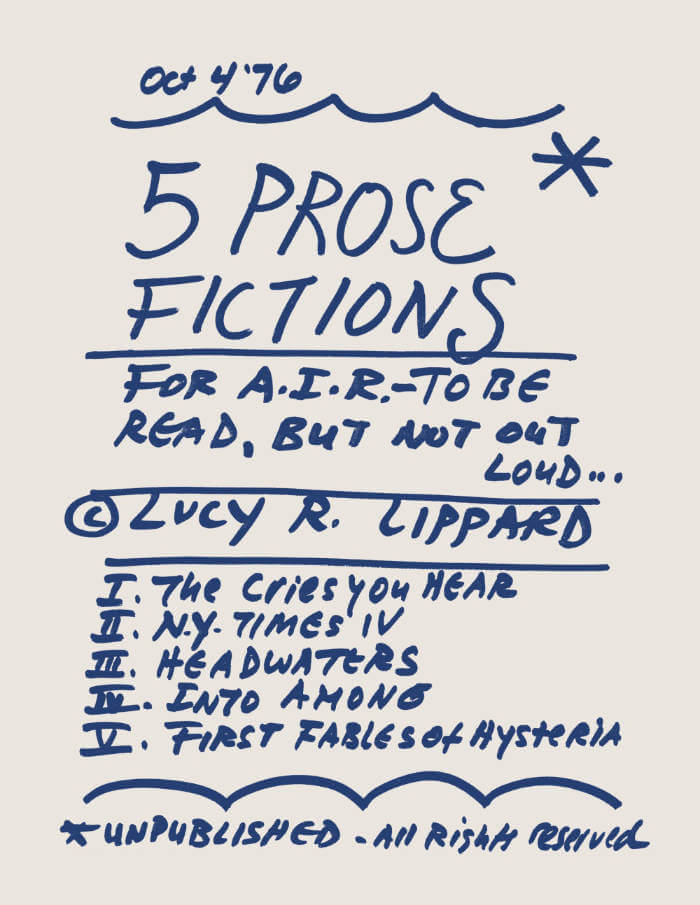
5 Prose Fictions
Originally self-released in 1976 through A.I.R. Gallery, New York, the five short unpublished manuscripts collected in 5 Prose Fictions offer an abbreviated introduction to curator Lucy R. Lippard’s largely under-examined fictional work.
The republication of these pieces follows the recent rerelease of I See / You Mean and provides further context for the released of Brimstone this Fall, an anthology compiling over 50 of Lippard’s experimental and narrative fiction works from the early 1950s through the 1980s.

DEARS No. 4 at.tending
Robert Steinberger, Delphine Chapuis Schmitz and 1 more
DEARS is a print magazine for transversal writing practices at the crossroads of art, poetry and experimental writing. It brings together authors and writers from different backgrounds and constitutes a dedicated platform for texts escaping the usual genres and disciplinary boundaries.
DEARS promotes the exploration of new forms of language as a way to foster new forms of living together, and emphasizes the growing relevance of trans- versal writing practices in this respect.
Issue no. 4 / Summer 2022 / at.tending
With texts by Rhoda Davids Abel, Marcelline Delbecq, Egana Dzhabbarly, Camille Kaiser, Alexandra Keramidas, Marianna Maruyama, and an epigraph by Rosi Braidotti.
Editors are Delphine Chapuis Schmitz, Nicole Bachmann and Robert Steinberger.

DEARS No. 3 RE.SONATE
Robert Steinberger, Delphine Chapuis Schmitz and 1 more
DEARS is a print magazine for transversal writing practices at the crossroads of art, poetry and experimental writing. It brings together authors and writers from different backgrounds and constitutes a dedicated platform for texts escaping the usual genres and disciplinary boundaries.
DEARS promotes the exploration of new forms of language as a way to foster new forms of living together, and emphasizes the growing relevance of trans- versal writing practices in this respect.
Issue no. 3 / Winter 2021 / RE.SONATE
With texts by Meloe Gennai, Livia Johann & Anne Sylvie Henchoz, Rahel Kraft, Sanna Marander, Dominic Oppliger, Dominique Petitgand, Sarah Riggs, Cia Rinne, Axelle Stiefel & Sanna Helena Berger, Niklas Tafra, Salomé Voegelin and an epigraph by Frantz Loriot.
Editors are Delphine Chapuis Schmitz, Nicole Bachmann and Robert Steinberger

mnemotope issue 003
This thrid edition of mnemotope magazine features pieces from contributors that range from playlist, recipes to poetic essays to drawings to private messages to a screenplay and beyond.
Mnemotope is a community magazine, published by bog bodies press. Mnemotope magazine takes this as its inspiration-it acts as a place in which lots of stories from across timelines and borders can sit together, and cultural memories can interact. It exists to create and hold the expression and knowledge of its diverse community, because of this, the contents of the magazine are wonderfully varied; some confessional poetry, some hastily notated recipes, some fiction, some history, lots of other things, all submitted during an open call. The format put spreads together of contributions that seem to somehow be in dialogue with one another.
The name of the magazine comes from a term that's used in writings about archaeological finds - it's a little complex when we speak about it abstractly, so take, for example, a bog body. A bog body is an object, but when we look at one it takes on another function as an image. This image is the part beyond the physicality of the object-it's what makes us think about what the world must have been like when this person was walking on it, what they looked like, what they did, who found them, how much the area they were found in must have changed and so on and so on and so on. A mnemotope is something that compresses time, and allows you to be in the bog two thousand years ago and in the museum looking at the body and at home reading about it all at once.

mnemotope issue 002
This second edition features pieces from 40 contributors that range from soup recipes to poetic essays to drawings to music recommendations to a screenplay and beyond.

F.R. David - "Erratum"
Following an open call, this is—the very last issue—a collectively-compiled "Erratum", or addendum [if you will] to the twenty-three issues from 2007 until now.
Edited with Paul Abbott, After 8, Alma Sarif, Phil Baber, Daniel Blumberg, Thomas Boutoux, Kristien Van den Brande, Chloe Chignell, Martina Copley, Anthony Elms, Chris Evans, Carolina Festa, Kasper Feyrer, Richard Finlay Fletcher, Ben Green, Mariëtte Groot, Krist Gruijthuijsen, Léa Guillon, Sarah Handley, Gloria Hasnay, Loes Jacobs, Michel Khleifi, Willis Kingery, gerlach en koop, James Goggin, Keira Greene, Léa Guillon, Jacob Lindgren, Kobe Matthijs, Martino Morandi, Zen Nguyen, Alice Notley, Robert M. Ochshorn, Oscar the dog, Willem Oorebeek, David Reinfurt, Scott Rogers, Andrés de Santiago Areizaga, Rosa Sarholz, Clara Schulmann, Andrea di Serego Alighieri, Sabrina Tarasoff, Kristy Trinier, Seymour Wright and Unknown.
F.R.DAVID is a typographical journal, dealing with the organization of reading and writing in contemporary art practices. It was published by de Appel in Amsterdam (2007–2016) and is currently co-published by KW with uh books.

Masturbatory Reader (2nd edition)
This Masturbatory Reader asks three main questions.
1. What power and pleasure can we access through attending to the erotics of knowledge production?
2. How are the sites, systems and tools of knowledge-making designed to reiterate violent norms (and in turn, erase deviant practices)?
3. What could the making (and unmaking) of these systems allow us to imagine?
To unpack these questions the edition gathers 16 contributors across 136 pages, conjuring the thinking (wondering, studying, lusting, sweating, ranting) of an expanding chorus of references that sit distances apart, folded here between facing pages. A chorus calling to action, calling to theory, calling to bed.
Featuring D Mortimer, Wes Knowler, Biogal, Tallulah Griffith, Brooke Palmieri, Carl Gent, Sophie Mak-Schram, Alice Butler, Jessa Mockridge, Nat Pyper, Alton Melvar M Dapanas, Sammy Paloma, Donna Marcus Duke, and Ryan Boultbee, with a forward by Emily Pope.
“In this anthology, reading is cruising, and cruising is reading.” – Sam Moore, ‘The (Bad) Taste Test: Radical Acts of Queer (Self) Pleasure in The Masturbatory Reader’, Polyester Zine

FDBNHLLLTTFMOURNING
Tenth and final FDBN...* publication.
Featuring zack mennell, Biogal, James Sunderland, Fiona Glen, Jessie McLaughlin, Dan Schapiro, A Lyons, Stephanie Lones, Julian Konuk and Ioulitta Triantafyllou.
Guest edited by amy etherington.
Risograph and Thermography cover with flourecent green sticker black and white inners throughout.
*Fragile-Disorienting-Breakable-Naive-Hesitant-Loving-Lusting-Leaking-Trembling-Terrifying-Fucking-Mourning

Amends
Amends by Tim Etchells is a selection of texts haunted by performance but written for the page. In three uncanny acts, Amends exhausts the inauthentic languages of device, correction and apology, while remaining deeply sorry.
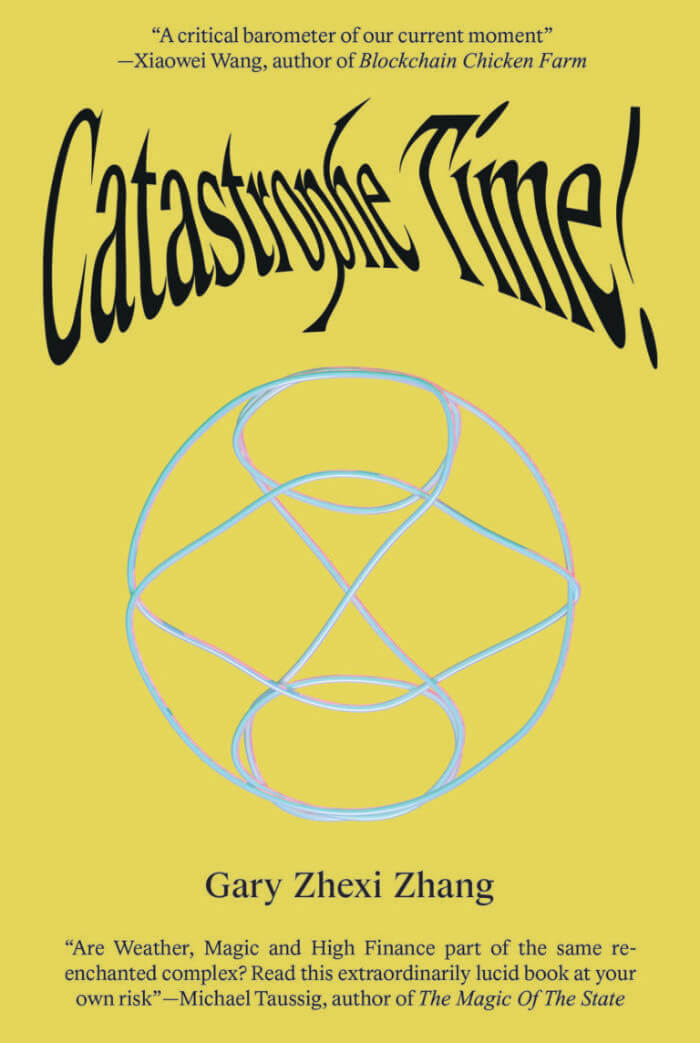
Catastrophe Time!
A collection of essays, fictions, and interviews exploring the weird temporalities of finance and catastrophe.
Once, financial practitioners plied a hybrid trade as hydrologists, star-gazers, and weather-watchers who sought to discover the natural laws of value and exchange as they did the divine order of an unchanging nature. Today, corporate firms hire trend forecasters and scenario planners to play out strategic fictions in virtual worlds. Hurricane insurance markets simulate a turbulent climate to offer investment instruments to hedge against the risks of the stock market. And for financial astrologers operating in the city of London, celestial motions provide a cosmic map that orients the mood of terrestrial markets.
Bringing together artists, researchers, and interstitial practitioners, Catastrophe Time! pays attention to the conditions of speculative knowledge on an increasingly volatile planet. Traversing a gray zone between rigorous research and operative science fictions, its contributors question how practices of speculation may transform, undermine, and at times exceed, the worlds they set out to model.
Edited by artist Gary Zhexi Zhang, Catastrophe Time! explores the power of temporal technologies—whether currencies, conspiracies, or simulation models—to shape reality through fiction. By bringing together researchers and writers working at the boundaries of temporal practices, including Diann Bauer, Philip Grant, Bahar Noorizadeh, Habib William Kherbek, Klara Kofen, Kei Kreutler, Suhail Malik, Bassem Saad and Gordon Woo, this urgent volume seeks to make sense of the unraveling times in which we live.

Eraser
Welcome to the world, Eraser! We are proudly annoucing the release of Angharad Williams’ book, which concludes a two-year process of writing and has existed in the form of an exhibition, a performance, and a book. Eraser is as much about the categorical boundaries of our consensual reality—between self and other, human and non-human, waking and dreaming consciousness—as it is about an urge to overcome them. The book’s main protagonist undergoes multiple transformations via psychic and physical transferences with elementary forces—involving a trout and a magpie, among other things—that unsettle the idea of the “stable” self.
Eraser proposes a perspective in which the categorical distinctions between individual self, others, and non-human life slowly begin to dissolve. Other worlds of consciousness—of animals, plants, and organic matter—here embody a form of social organization free from the hierarchies of tradition and liberal progress.
This publication is copublished with the Kunstverein für die Rheinlande und Westfalen, Düsseldorf. Angharad Williams, born 1984 in Ynys Môn, Wales, lives and works in Berlin.

Silent Whale Letters – A Long-Distance Correspondence, on All Frequencies
Ella Finer, Vibeke Mascini and 1 more
An experiment in listening to frequencies beyond human sensorial range, Silent Whale Letters is a long-distance correspondence intimately attuned to the infravoice of a blue whale, a document held silent in the sound archive, and other so-called "silent" subjects.
As part of an ongoing collaboration between Ella Finer and Vibeke Mascini the letters consider how the silent document shifts the logic of the archive, figuring listening as a practice of preservation.
As the letters attune to the ocean loud with communications across time and space, the authors write about the movement of matter, of energies, wavelengths, currents and how the ocean preserves as it disperses what it carries. How does working with what we cannot see, or even hear within range, shift the parameters of attention? How does the energetic archival space of the ocean agitate and disrupt claims to knowledge, history, and power?
Moving through three years of call and response the book unfolds through "a joint meditation on the transformative potential of a note, a voice, carried from saltwater into the archive" (Rebecca Giggs).
They chart a process that is equally conceptual and intimate, theoretical and deeply personal, moving through discussions of (amniotic) undercurrents, call-and-response mechanisms, energetic wavelengths, oceanic and archival memory, mysterious scales, and the watery acoustic commons.
Edited by Kate Briggs.
Contributions by Kate Briggs and Emma McCormick Goodhart.

Dies: A Sentence
Dies: A Sentence by Vanessa Place is a 117-page, one-sentence novel about the coils of language and war, unspooled in the dying breath of a pre- and post-scient World War I soldier.
John Witte of the Northwest Review calls Dies, "a marvel of sustained synergy," author Jim Krusoe describes the book as "dizzyingly complex, compound, and full of miraculous side trips as well," and novelist Doug Nufer heralds DIES as a "delightful tour de force of a hopelessly grim predicament." Place obliterates the line between victim and perpetrator, subject and object, rendering this human truth: in the death sentence of life, there is still beauty. "Roll over, dear Whitman," says Susan McCabe in her Introduction, "Here's our new original."
“In a single sentence as bloody and crazed as the history of the 20th century, Place offers up “the untamed cadence of ten thousand feet.” Caught somewhere between Beckett’s The Unnamable, Kathy Acker’s Don Quixote, James Joyce’s Finnegans Wake and Ann Quin’s Passages, Dies is an extravagant and ferocious book, a real and uncompromising marvel.” — Brian Evenson
“The architectonics of Dies calls upon the aural touchstones, not only of Pound, but of Dante, Rabelais (beware of a scatological extravaganza), Eliot, Whitman, Stein, the Bible, Beckett, Joyce, Remarque, even ‘the ghost of mark twain‘—a babbling horde that makes this sentence both humbling and beyond paraphrase, both mythic and contemporary.” — Susan McCabe
Introduction by Susan McCabe.

Worms #7 'Artists who Write and Writers who Art'
The ‘Artists who Write and Writers who Art’ Issue. For Worms 7 we’ve looked to our visual counterparts for some soil nutrients. We’ve wormed our way into the psyche of the artist, to bring you the ‘Artists That Write, and Writers That Art’ issue. Many of our subjects in the past have come into writing via non-traditional routes (filmmaking, curation, art, performance, podcasting, and so on), so it only felt right to cast a spotlight over those who have inspired our experimental literary practices so far. Not only those that use words within their visual practice, but those who use images to inform their writing. The reader, the writer, the artist, the activist, the poet and performer; they’re all here and they’re all worms.
In this mega worm (which is fittingly pink, for the first time somehow) you are in for a feast. Clem interview Helen Marten, Martine Syms and Diamond Stingily, Caitlin interviews actual art-writing icon Olivia Laing, Pierce talks to the profound Dr. Joy James, Philippa Snow gives us her thoughts on the act of writing art criticism (spoiler: it’s out her ass), and we have enough Derek Jarman content to keep you going for the rest of the year. We have some hilarious/insightful/weird/wonderful contributions from some of your favourite regulars too; including Jess Cole, Isabelle Bucklow, Sam Moore, Haydée Touitou, Estelle Hoy and many others.
(Note from the publisher)
FEATURING:
DIAMOND STINGILY, HELEN MARTEN, NICOLE RUDICK, NIKI DE SAINT PHALLE, MARTINE SYMS, OLIVIA LAING, DR. JOY JAMES, JORDAN WEITZMAN, WU TSANG, DEREK JARMAN, SABINE MIRLESSE, MISHA HONCHARENKO, CHANTAL AKERMAN, JOANNA NOVAK, ANNIE ERNAUX, DAISY SANCHEZ, JENNA SUTELA, ANICKA YI, TUOMAS A. LAITINEN, STEPHANIE COMILANG & SIMON SPEISER, VALERIE SOLANAS
CONTRIBUTORS:
HAYDEÉ TOUITOU, L SCULLY & LUCAS RESTIVO, LEE RAE WALSH, JESS COLE, ESTELLE HOY, PHILIPPA SNOW, SAMANTHA ROSENWALD, ISABELLE BUCKLOW, MONA GLASSFIELD, CLEM MACLEOD, SARAH WHITE, CAITLIN MCLOUGHLIN, PAVIELLE GARCIA, IONE SAIZAR, CHANTAL JOFFE, SOPHIE DAVIDSON, PIERCE ELDRIDGE, VIOLET CONROY, ELLE PÉREZ, PAUL MPAGI SEPUYA, JACQUELINE ENNIS-COLE, MARY ADETURINMO, STEPH FRANCIS-SHANAHAN, SAM MOORE, BUG SHEPHERD-BARRON, DONNA MARCUS DUKE, SAM HOLTON BRADLEY, KITTY GRADY, FELIX PILGRIM, CICI PENG, HOLLY MILLS, THEA MCLACHLAN, ERICA GOULD, PAULA DUCAY AND INÉS GARCÍA, ELVIRA GARCIA, INÊS GERALDES CARDOSO, JODIE HILL, JEMIMA SKALA, MAURA SAPPILO, DELIA RAINEY

Sibyl's Mouths
Mark Von Schlegell, Luzie Meyer and 3 more
Sibyl's Mouths is the most recent in a series of publications by Pure Fiction, a writing and performance group with shifting members active since 2011.
From February 12 to March 6, 2022, Pure Fiction presented an exhibition and performance program at the Kölnischer Kunstverein in Cologne titled "Shifting Theater: Sibyl's Mouths". The starting point was a collective reading of Mary Shelley's 1826 novel The Last Man, in which the narrator discovers a collection of scribbled oak leaves scattered in a cave outside Naples. Alleged prophecies of the Cumean Sibyl, the textual fragments inscribed on the leaves foretell the story of an epidemic that ravages the globe in the 2100's—a period where solitude, intimacy, and the perception of time is radically renegotiated.
Through a multiplicity of textual genres and writerly approaches, contributors examine the questions and forms that emerge from prophecy: the role of the voice in text, writing and performance; fragmentary heterogeneous narratives.
The mouth is consulted, not only as a mouthpiece or as a cavernous instrument for vocalization but as an essential part of the digestive tract. Processes in the gut, such as assimilation, excretion, and regurgitation involve multiple temporal directionalities, and may function as metaphorical gateways to intuitive truths.
Contributions by Rosa Aiello, Gerry Bibby, Coleman Collins, Ayanna Dozier, Annie Ernaux, Amelia Groom, Michèle Graf & Selina Grüter, Monilola Olayemi Ilupeju, Ellen Yeon Kim, Bitsy Knox, Dan Kwon, Erika Landström, Enad Marouf, Katrin Mayer, Aislinn McNamara, Kamila & Jasmina Metwaly, Luzie Meyer, Vera Palme, Theresa Patzschke, Georgia Sagri, Mahsa Saloor, Elif Saydam, Mark von Schlegell, Simon Speiser, Elaine Tam, C.S. Tolan, Mikhail Wassmer, Anna Zacharoff.